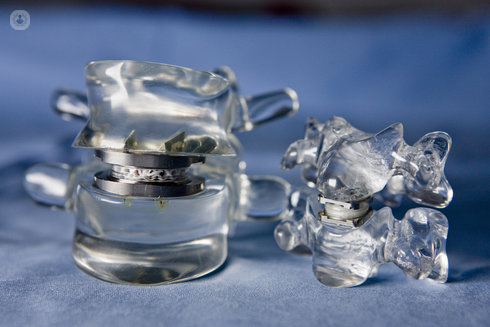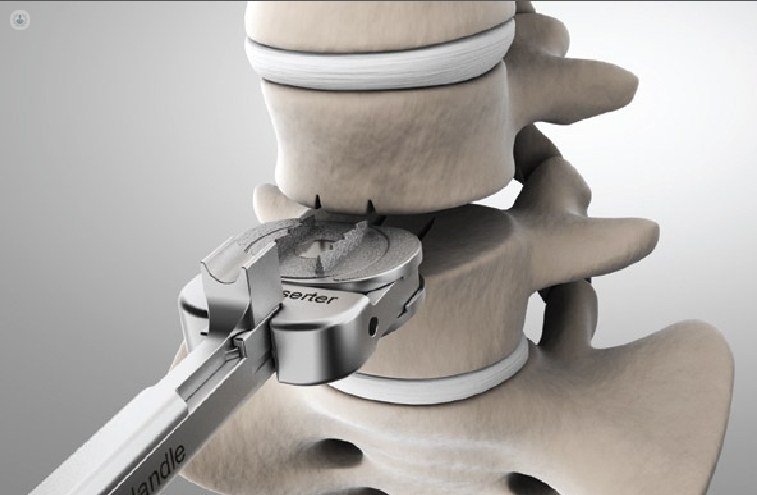Disc prosthesis:they are, as they stand and how is the postoperative ?
Written by:The disc prostheses are devices that maintain normal mobility and biomechanics of the cervical spine and lumbar. Placed after complete resection of a pathological drive, allowing you to keep, in full, the functions of the disc.
The disc prostheses are indicated in all cases of disc disease, ie, degenerative disc disease and herniated disc;with or without compression of the nerve root symptomatology that present no improvement after a period of 4-6 weeks of intensive rehabilitation treatment. At both the cervical and lumbar spine, using disc prostheses is achieved:
• Maintain mobility
• Maintaining stability
• Reset the cervical and lumbar normolordosis
• Reduce disc degeneration of adjacent segments
• Eliminate the use of bone graft
• Early onset of post-surgical mobility
• Early incorporation into normal life ( physical and occupational )
Placement of prostheses
1. Cervical approach or minimally invasive anterior lumbar ( ALIF ). If greater than L4 lumbar disc, the approach is lateral ( XLIF ).
2. Completely resected pathological drive to complete the liberation of the spinal canal and nerve roots.
3. Preparation of disc space prosthesis receptor dials
4. Selection of the proper size and angulation of the prosthesis to be implanted
5. Placement of the prosthesis and radiological testing calculation correct placement
6. Close surgical approach and intradermal suture invisible scar.
This is a surgical intervention is considered low risk by the minimum complications that may occur:
• Bleeding ( rare)
• Infections (rare )
• Injury nervous structures (rare)
• Dural tear ( rare)
• Lesion great vessels, esophagus, trachea, intra-abdominal organs ( exceptional)
Postoperative
In case of cervical surgery, hospitalization is required 24-48h. Minimal discomfort surgical wound area. No complete rest is necessary. You are advised to wear soft collar the first week to activities outside the home. Incorporation labor between 2 and 3 weeks after intervention, depending on the type of work.
In case of lumbar surgery, hospitalization is approximately 3-5 days. Likewise with minimal discomfort surgical wound area. No rest is necessary. Incorporation to normal activity after 3-4 weeks.





